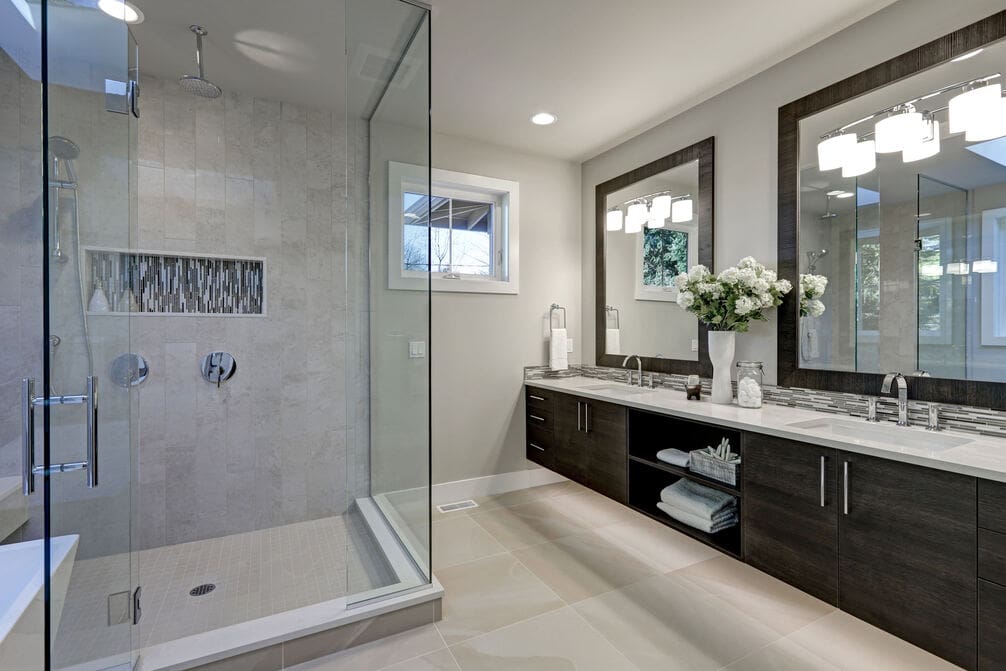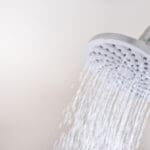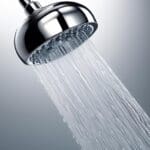You’ve probably heard the theory that using a low-flow shower head can drastically cut down your household’s water consumption, but how much truth does this claim hold?
By switching to a low-flow shower head, you’re not just making a small adjustment in your daily routine; you’re embracing a change that could save thousands of gallons of water each year, significantly lower your utility bills, and decrease your environmental footprint.
The economic benefits are clear, with noticeable reductions in both water and energy bills. However, many wonder if this switch compromises the quality of their shower experience, a concern that merits a closer examination.
Key Takeaways
- Low-flow showerheads conserve water and promote environmental sustainability.
- Switching to low-flow showerheads leads to economic savings on heating and water bills.
- Low-flow showerheads maintain a high-quality shower experience without wasting resources.
- Using low-flow showerheads reduces energy consumption and carbon dioxide emissions.
Water Conservation Benefits
Switching to low-flow showerheads saves thousands of gallons of water annually, directly reducing your water consumption and promoting environmental sustainability. These devices are designed to use less water, functioning efficiently by limiting flow to fewer gallons per minute without compromising your shower experience. By making this switch, you’re not only conserving water but also actively participating in wider water conservation efforts.
Low-flow shower heads significantly lower your water usage, which translates into a reduced water bill. This reduction is beneficial for your budget, allowing you to allocate funds elsewhere while still enjoying the comforts of a satisfying shower. Moreover, the gallons of water per year you save contribute to the sustainability of precious water resources, underscoring the water conservation benefits of such a simple change.
Additionally, using low-flow shower heads helps to conserve water, an essential step towards environmental stewardship. By opting for these eco-friendly alternatives, you’re reducing the demand on water treatment facilities and decreasing the energy required to heat water. This not only cuts down your electricity usage but also minimizes carbon dioxide emissions, further amplifying the positive impact of your decision to switch to a low-flow shower head.
Economic Savings Explained
Adopting low-flow showerheads can lead to substantial economic savings, saving you up to $50 annually on heating costs alone. By reducing the amount of hot water you use, you’re not only cutting down on your water consumption but also the energy needed to heat that water. This dual saving effect significantly lowers both your water and energy bills.
Switching to a low-flow showerhead means you’re using thousands of gallons less water per year. This translates into a notable decrease in your monthly water bills. When you consider the cost savings from both reduced water use and less energy consumption, installing a low-flow showerhead emerges as a smart financial decision. It’s an investment that typically pays for itself within the first year, making it a no-brainer for anyone looking to cut utility bills.
Moreover, you’re not just saving money; you’re also contributing to a larger environmental cause. Using less water and energy means fewer carbon dioxide emissions, aligning your personal savings with global conservation efforts.
Shower Experience Quality
Despite common misconceptions, low-flow showerheads are designed to deliver a high-quality shower experience, combining efficiency with pleasure. You might worry that reducing your shower’s flow to less than 2.5 gallons per minute would compromise comfort, but modern low-flow shower heads defy these expectations. They’re engineered to maintain satisfying water pressure and temperature, ensuring your showers are just as enjoyable, if not more, than with traditional models.
Thanks to innovative design, these shower heads use smaller apertures combined with air to intensify water pressure. This means you’re not just saving water; you’re also experiencing a more invigorating shower. The fear of stepping into a less-than-lukewarm stream is unfounded, as these heads are adept at maintaining consistent water temperature, offering you a comforting embrace of warmth every time.
Moreover, the shift to a low-flow shower head is an investment that quickly pays for itself. The savings you’ll accrue on water and energy bills can offset the initial cost within a year, making it a wise choice economically. Upgrading to a low-flow model isn’t just about saving money; it’s about ensuring a satisfying shower experience without wasting resources.
Environmental Impact Assessment
Understanding the environmental impact of your choices, including the switch to low-flow shower heads, begins with a thorough Environmental Impact Assessment (EIA). This process evaluates how your actions affect natural resources and helps devise strategies to mitigate negative consequences.
By choosing low-flow showerheads, you’re not just conserving water; you’re significantly reducing the energy required to heat the water for your showers. This reduction in energy consumption directly translates to lower carbon dioxide emissions, contributing to a healthier planet.
Low-flow showerheads, especially those with a WaterSense label from the Protection Agency, are designed to minimize the flow of water without compromising your shower experience. This technology ensures that you use less household water, which, in turn, means less water to cool or heat, depending on your region and season. Consequently, you’ll notice a decrease in your energy bills and your carbon footprint.
Install a Low-Flow showerhead today and join the movement towards more sustainable living. It’s a simple step, but it has a profound impact on conserving vital resources and protecting our environment from further damage.
Installation and Maintenance Guide
After recognizing the significant benefits of low-flow showerheads, it’s essential to know how to properly install and maintain them to ensure optimal performance and longevity. The impact of using a low-flow shower head in your home is easy to see, from water conservation to savings on utility bills. Here’s a brief installation and maintenance guide:
- Remove the Old Showerhead: Begin by unscrewing the old showerhead from the shower arm. You might need adjustable pliers for this step, but ensure to wrap the shower arm with a cloth to prevent damage.
- Clean the Threads: Remove any old tape or residue from the shower arm’s threads to ensure a clean surface for the new showerhead.
- Install the New Low-Flow Shower Head: Wrap the shower arm threads with new plumber’s tape, then screw on the new showerhead by hand. Tighten securely but avoid over-tightening.
- Regular Maintenance: To maintain optimal water flow, regularly clean the nozzles to remove mineral deposits. Newer models often have easy-clean features.
Frequently Asked Questions
Are Low-Flow Shower Heads Good?
Yes, they’re great! You’ll save thousands of gallons of water yearly, cut down on your bills, and reduce carbon dioxide emissions. Plus, modern designs ensure you don’t sacrifice water pressure for sustainability.
What Is Better 1.8 or 2.5 GPM Shower Head?
You’ll find a 1.8 GPM shower head better for saving water and reducing bills. Though a 2.5 GPM offers a stronger flow, it’s less efficient and eco-friendly, impacting your savings and environmental footprint.
What Does a Low Pressure Shower Head Do?
A low-pressure shower head reduces water flow, saving you money and conserving water. It uses less hot water, cutting down your energy bills and carbon footprint, making it a sustainable choice for your home.
How Does a Low-Flow Shower Head Help the Environment?
You’ll help the environment by using a low-flow shower head. It conserves water, reduces your carbon footprint by needing less hot water, and cuts water bills. It’s a simple step towards sustainability.





